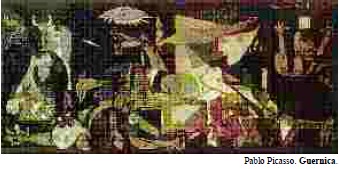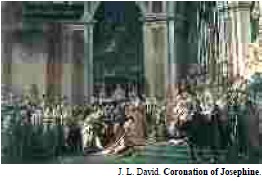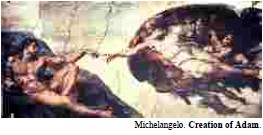When new visual ideas are first introduced by the artist, they are often seen as shocking, and perhaps even as incomprehensible. However, with time the best and most effective of these ideas are accepted. There is nothing harder than trying to grasp what was shocking or illuminating about certain images, or ways of making images, once the shock is gone, and we have all absorbed this bit of visual data into our own vocabularies. Artists show us new ways to see familiar things, and how to interpret new situations and events through various kinds of visual shorthand. This creation of visual language may be the artist’s intention, or it may be a side effect of other purposes.
Probably the oldest purpose of art is as a vehicle for religious ritual. From the prehistoric cave paintings of France, to the Sistine Chapel, art has served religion. For centuries the Church was the primary patron of artists. In traditional societies even today, the primary purpose of art is religious or ceremonial. Art may also serve as a commemoration of an important event. The event may be of major historical importance, such as the coronation of Josephine by Napoleon as recorded by the artist David, or it may be important only to the participants, like the image of a wedding or a baptism.
Art can also convey intense emotion. The expressive power of art can be seen in literal ways in the capturing of facial expression and body language. The works of expressionists such as Munch or Kirchner are charged with powerful emotions. Picasso, in works like Guernica, is able to communicate intense emotion. This is accomplished by the use of dramatic or exaggerated color, light, form, and(or) other elements.
In any case, one of the primary functions of art is to interpret the subject matter at hand. Subject matter does not change all that much over time. Although new subject matter has evolved, the human condition, nature, and events still continue to capture the attention of artists. The media used have changed relatively little; though new materials have appeared in this century, the conventional media continue to be used. Nor can we say that the quality or artistic merit of art works has increased or lessened with time. However, throughout the course of history as society has changed, so also has the interpretation of specific subject matter. A portrait executed by Matisse in 1907 could not be confused with one done by van Dyck in the 1630s. Even landscape is reinterpreted in the context of a changing world. Each work is an expression of the subject in the context of the values, culture, and events of its specific era.
Internet: <http://char.txa.cornell.edu> (with adaptations).





